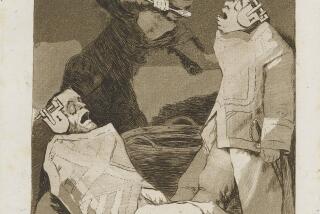An American Holocaust
The photograph was taken May 25, 1911, over a river in Okemah, Okla., from a newly built steel bridge. Laura Nelson is wearing a calico dress. She is a woman of about 35, shoeless, a wedding band visible on her finger. A second photo depicts her son, L.W., age 14. The two of them are shown together, suspended above the water by ropes.
Being lynched.
The photograph was taken July 24, 1892, near a woodshed in Redding, Calif., a railroad trestle to the rear. A plank from a woodpile has been nailed to adjacent pine trees, no more than a few feet apart. Two young men with whiskers, the Ruggles brothers, are in shirts and trousers, bound at the wrists and calves.
Being lynched.
The photograph was taken July 22, 1899, beside a buckboard in Fayette, Mo., a crowd gathered ‘round. A man in a floppy hat can be seen holding a buggy whip. In the wagon alone stands Frank Embree, cleanshaven, clear-eyed, very much alive, wearing nothing, lash marks across his back and legs.
About to be lynched.
As disturbing as any images ever captured on film in this country, they are part of an exhibit drawing around-the- block lines to a gallery in New York City, one that is reminding older generations--and, more important, instructing younger ones--about a horrifying and disgraceful era, a time that Georgia legislator John Lewis vividly alludes to as “an American holocaust.”
In this, Black History Month, the too-often-overlooked feats and distinguished achievements of Americans of color are rightfully celebrated. But the unlawful executions and indignities endured by countless thousands must never be neglected, or else black history will be a subject far too many of us fail.
*
Jack Woody, 42, formerly of Pasadena, publishes books of photography out of a Santa Fe, N.M., company called Twin Palms, whose volumes of high-quality prints include a remarkable collection of stark black and white imagery called “Lost Hollywood.”
The company’s coffee table tomes can stir up powerful feelings. One dealt entirely with the barbaric executions of 100 human beings by the tyrant Pol Pot’s regime in the killing fields of Cambodia.
Woody was in New York last year presenting a display at the International Center of Photography of a series of compelling 1959 Brooklyn gang photographs taken by photographer Bruce Davidson. The exhibit proved quite popular. So when it was ending, an ICP official inquired if Woody had any future projects in mind.
“How about a book of historical photographs?” Woody suggested.
“Of what?”
“Lynchings,” he said.
Woody recalls the color draining from the man’s face, a fairly stark if not ironic image in itself.
He was told, “We can’t show that.”
“Why not?”
“It would be too controversial. The black community would be up in arms.”
Woody, who is white, appreciated perfectly what the man meant. He was simply attempting to be sensitive, as well as to avoid any kind of public outrage, similar to the one that a Brooklyn art museum instigated in 1999 with an exhibit condemned as sacrilegious by many New Yorkers, including the mayor.
But rather than pretend something terrible never happened, Woody pointed out, “We have the Jewish community in this country supporting and building a Holocaust museum, so nobody will ever forget. What’s the difference? It’s how people deal with the past, by remembering and honoring those who were there.”
Andrew Roth, who runs the Roth Horowitz gallery on the Upper East Side, understood this point of view.
He agreed to exhibit 60 photographs--including picture postcards--of lynchings that took place between 1882 and 1968, virtually all black men, women and children. Twin Palms published these intensely moving images under the title “Without Sanctuary,” from the private collection of James E. Allen, an antiques dealer from Atlanta, on indefinite loan to Emory University.
“I don’t know if he knew what he was getting into,” Woody said of the gallery’s owner.
*
Instead of controversy, the exhibit--scheduled to close Feb. 12--has attracted huge crowds (admission is free) and great critical acclaim since opening in mid-January. Because the room holds only 25 or so, lines stretch far out the door, in freezing weather.
CNN, the BBC, German TV and Oprah Winfrey all have paid a call. Exhibit visitors praise its significance and power, some breaking into tears.
“Many people today, despite the evidence, will not believe-- don’t want to believe--that such atrocities happened in America not so very long ago,” writes Rep. Lewis (D.-Ga.), who is black, in his foreword to the book, whose initial run of 4,000 copies quickly sold out.
It is black history. It is American history. It is something we can use this month to study, then spend lifetimes unable to forget.
Mike Downey’s column appears Sundays, Wednesdays and Fridays. Write to him at Times Mirror Square, Los Angeles, CA 90053. E-mail: mike.downey@latimes.com.
More to Read
Sign up for Essential California
The most important California stories and recommendations in your inbox every morning.
You may occasionally receive promotional content from the Los Angeles Times.










